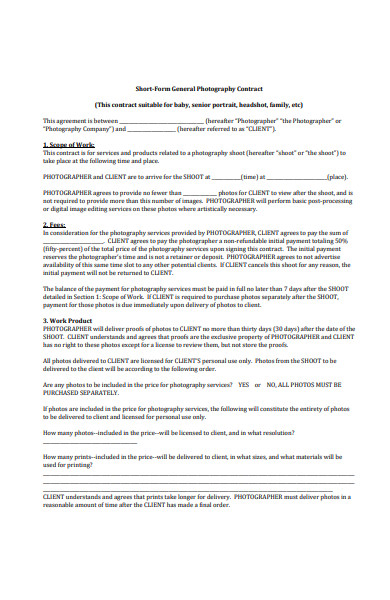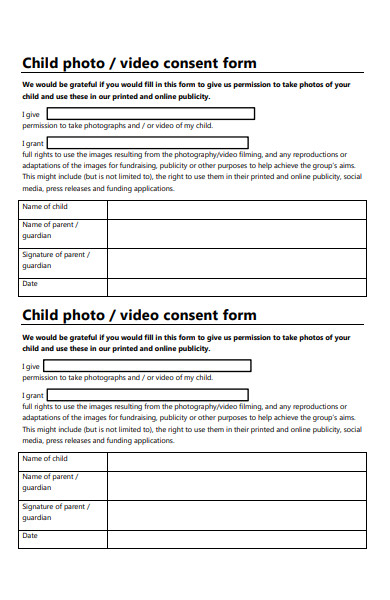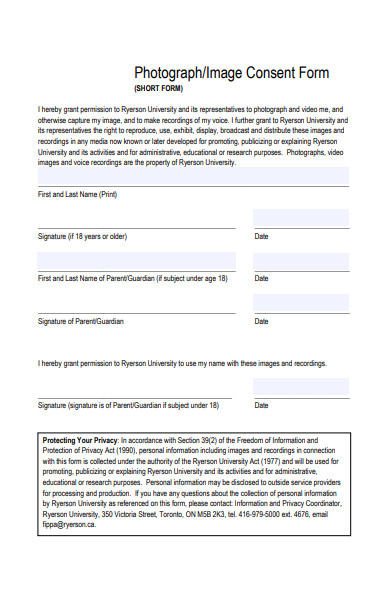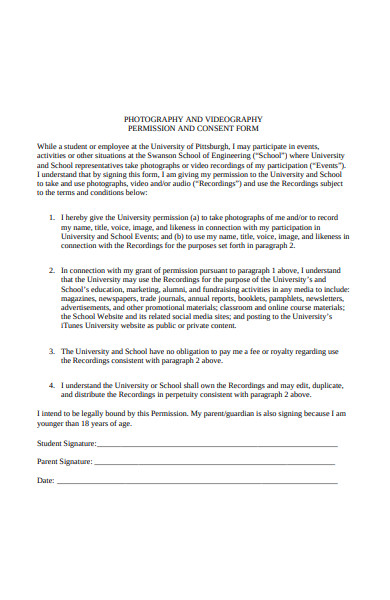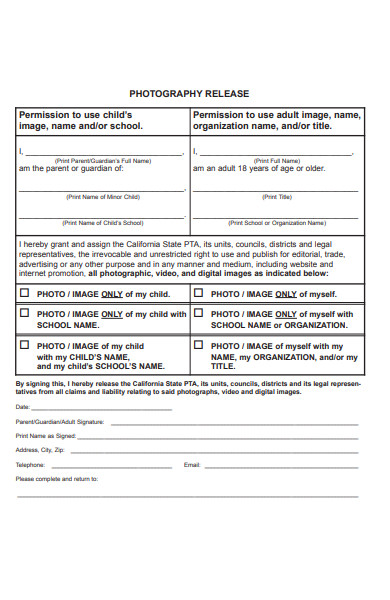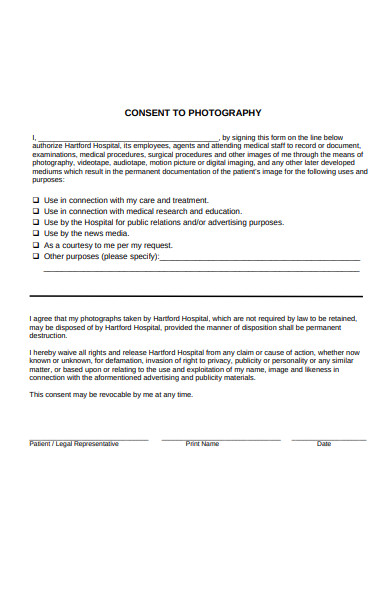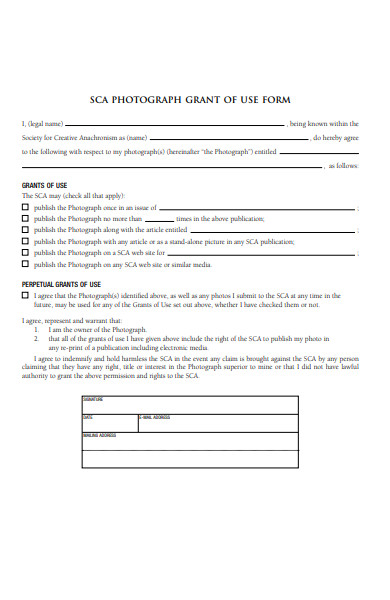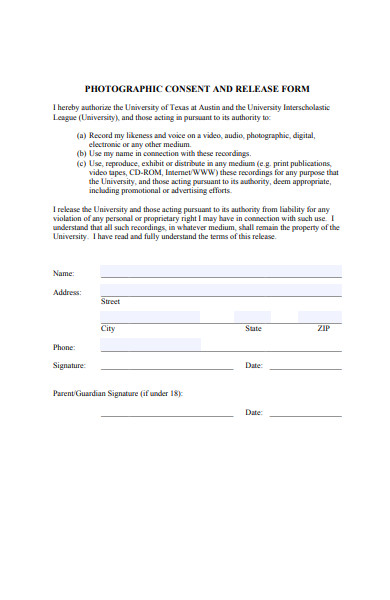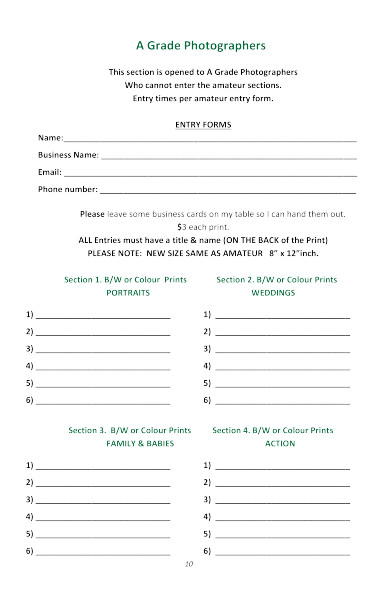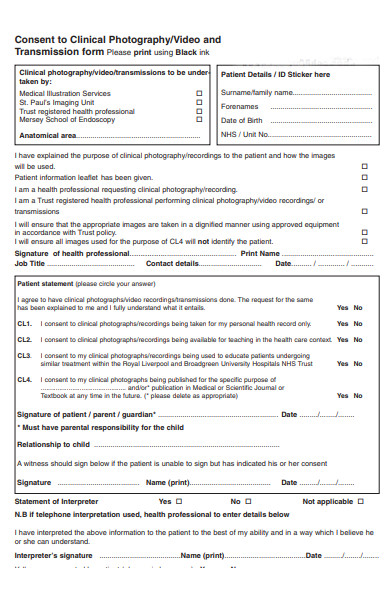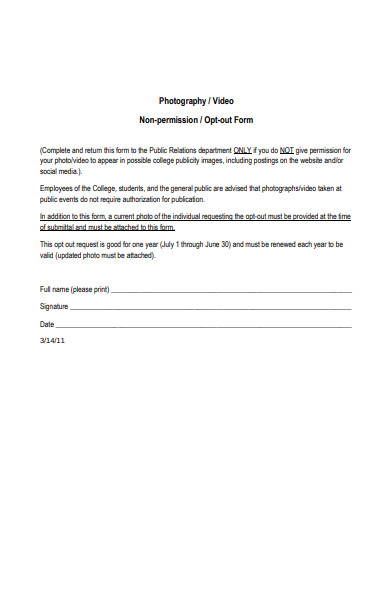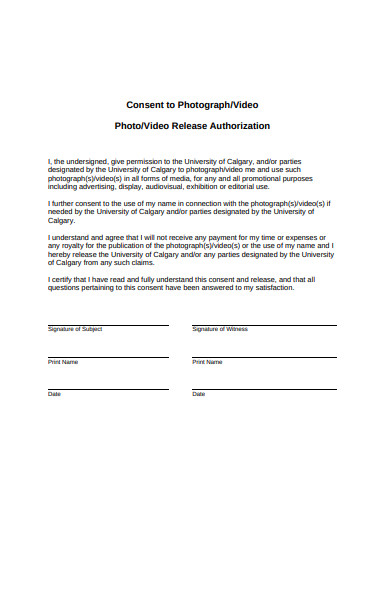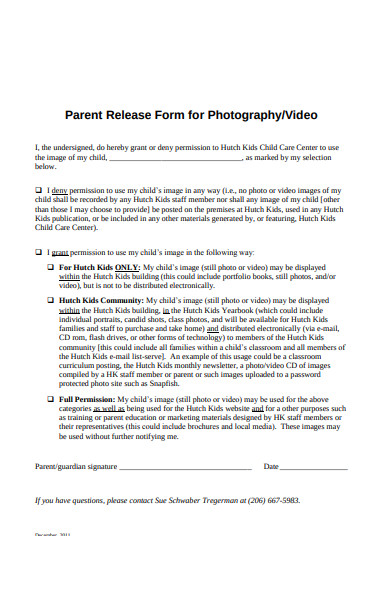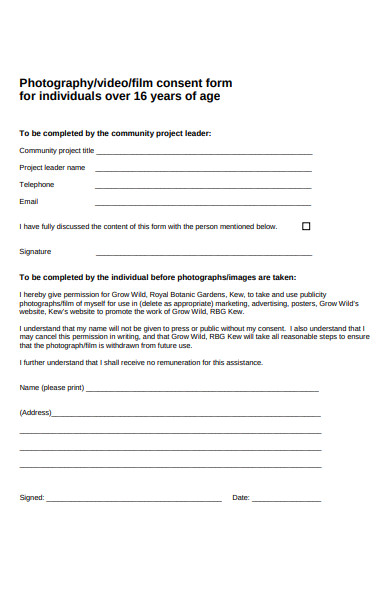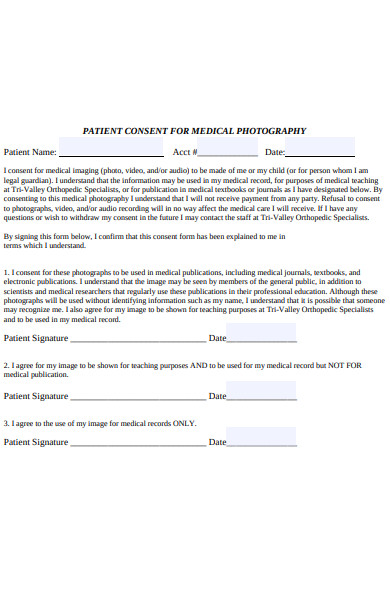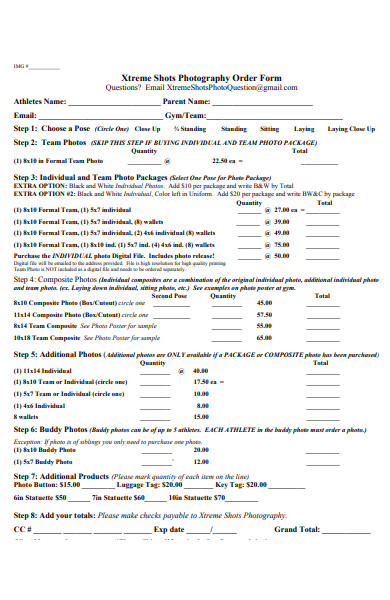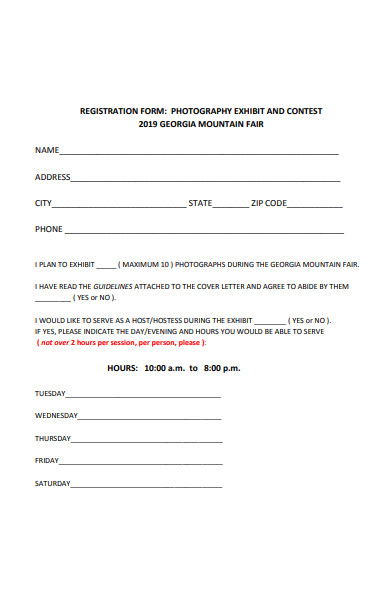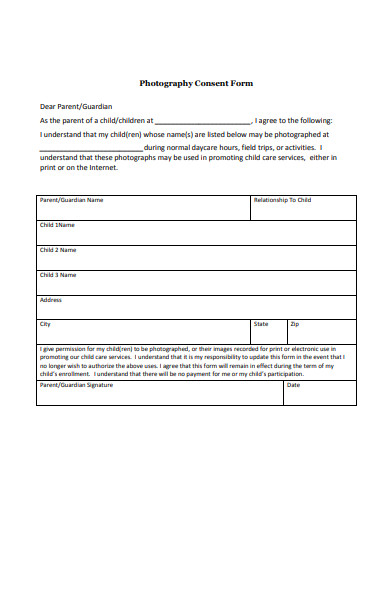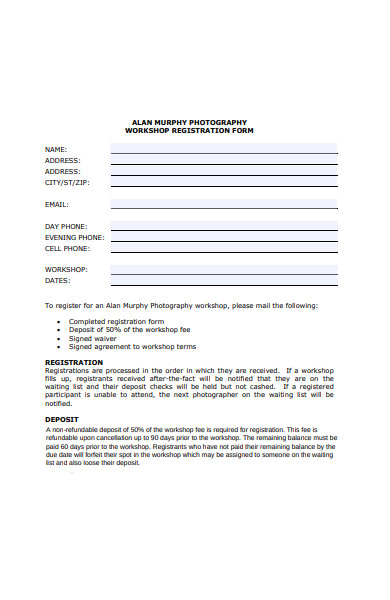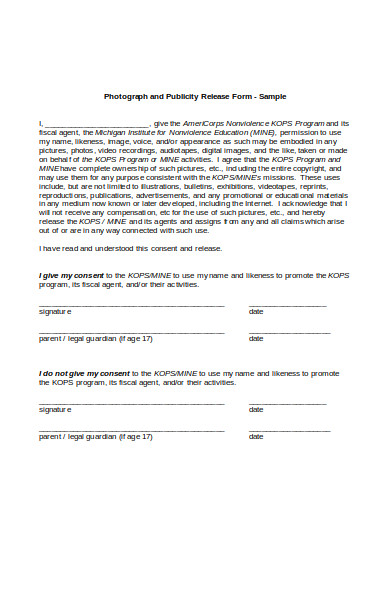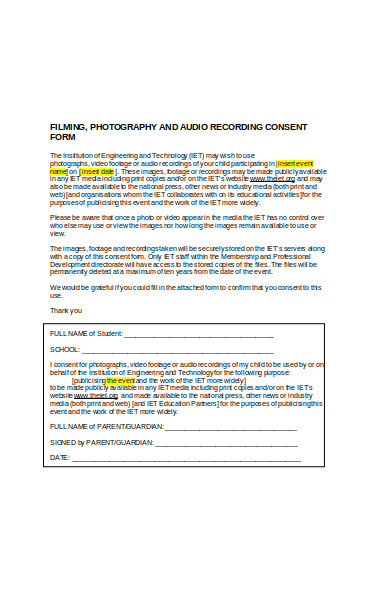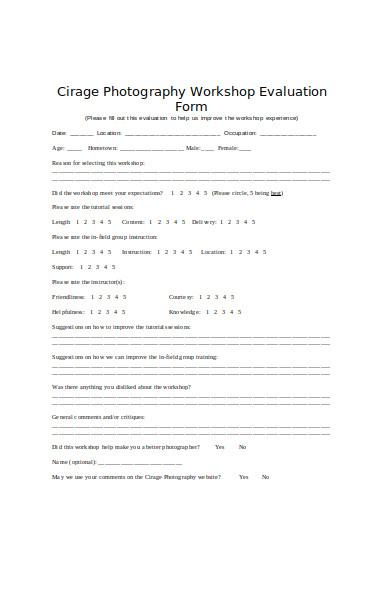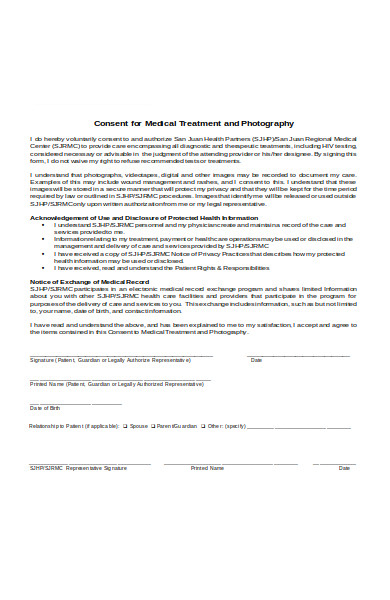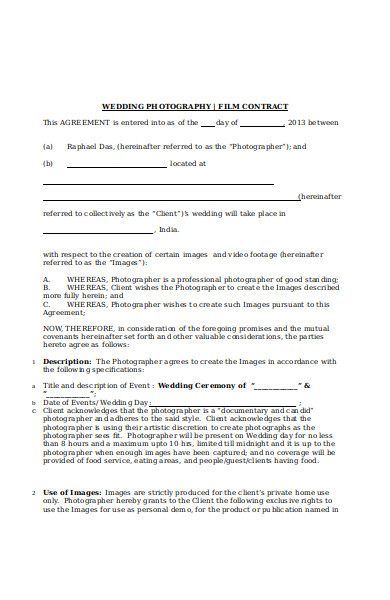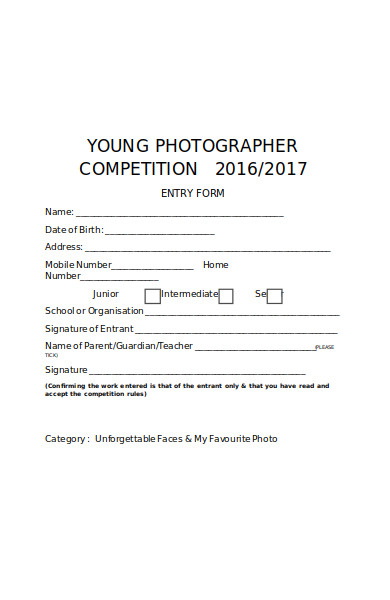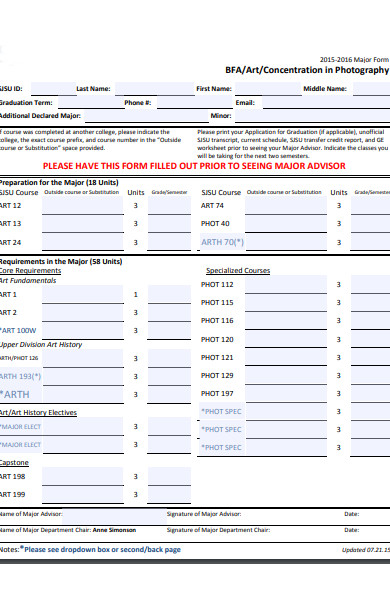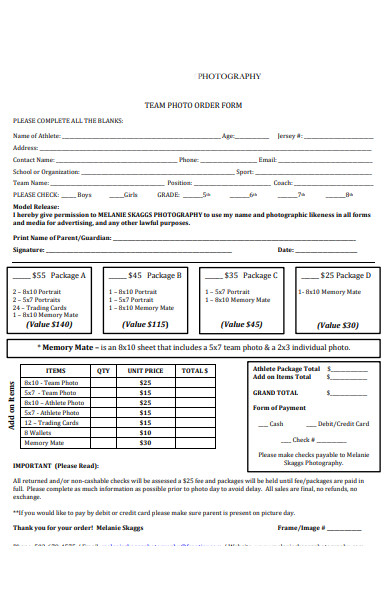The light shines in the darkness. It sometimes paints portraits, more than silhouettes or memories. Photographs, apart from being an art, continue to provide people with scenes of places they have yet to go to, or people they have yet to meet.
FREE 31+ Photography Forms in PDF | Ms Word
1. Photography Contract Form
2. Photography Consent Form
3. Photography Short Form
4. Photography Permission Form
5. Photography Release Form
6. Photography Agency Form
7. Photography Grant Form
8. Photography Digital Form
9. Photography Schedule Form
10. Clinical Photography Form
11. Non Permission Photography Form
12. Photography Media Form
13. Parent Release Photography Form
14. Photography Entry Form
15. Photography Film Consent Form
16. Medical Photography Form
17. Photography Order Form
18. Photography Exhibit Form
19. Child Photography Form
20. Photography Workshop Form
21. Photography Publicity Form
22. Photography Recording Form
23. Dental Photography Form
24. Photography Evaluation Form
25. Photography Treatment Form
26. Wedding Photography Form
27. Young Photography Form
28. Photography Campus Form
29. Model Photography Form
30. Photography Copyright Form
31. Photography Concentration Form
32. Team Photography Form
What Is a Photography Form?
Photography undertakes the capturing of moments, usually saved in memory cards. It is a profession and hence, the looming probability of getting paid for the work done. To secure the agreement between the client and the photographers, contracts are drafted, together with other documents that have legal implications between the two said parties.
A photography form does not only pertain to contracts. It also concerns waivers, consent forms, release forms, and copyright forms, any document related to photography. These documents intend to secure the rights of both the photographer and the client.
How to Become a Great Photographer
The popularity of Michael Yamashita and Steve McCurry, who photographed “The Afghan Girl”, did not happen overnight. They took the time to refine their craft with a zealous focus on details. To able to mirror their work ethics, we offer you these tips:
Establish Connections
In photography, you get to meet people who know people. This is true, not only in journalism but in any characterization of photography. Knowing people can lead you to mentorship for you to be able to improve your craft. Through these connections, you may find opportunities to shoot pictures for internationally renowned companies like Vogue, BBC, or National Geographic.
Practice Everyday
With the quarantine, our subjects become limited, usually confined to the four walls of an apartment or condominium unit. However, you can take this time to stretch your creativity. Websites generally provide ten or so rules on photography like framing, the rule of thirds, and color balance. You can try to follow that, but acknowledge that rules are there to regulate. Regulations should not bridle art. Like in DSLRs, you can use different types of filters to alter the color of the photograph or to prevent it from being overly exposed without sacrificing the richness of color.
Experiment
There are different mediums in photography, and what is common is the point and shoot camera within our smartphones. While its photos are easy to edit, it gives rise to our dependence on editing applications. You can try using other types of cameras, like film. Although you may find film cameras constricting at first, you’ll find it easy when you shift to a DSLR. There are effects though that are only done in manual film cameras like a double exposure.
Invest in Quality
DSLRs are expensive, but the aging of their features is slow. If you invest in a DSLR, you won’t have to upgrade your camera continually. By calculation, buying an expensive camera with a high shutter life is better than getting a cheaper one that you have to replace after a few years. Also, due to mass production, the more affordable cameras cannot be sold at more than half of the price when they were bought.
Avoid Over-Editing
There is an expected balance among the colors in a picture. Over-editing is not necessary to erase those grainy dots. In photography, those are called noise. The weight of an image is not based on the seamlessness of a picture but on the composition. It is because of the challenges in taking a photograph of a moving subject.
Observe Proper Etiquette
Taking a prize-winning photograph is sometimes due to luck. However, some photographers go beyond etiquette to get that picture. Organizations on photojournalism provide guidelines that a photographer should follow. Positioning in front of a photographer that arrived before you, thereby blocking his view, is behavior worthy of criticism. Also, when during emergencies, before you shoot, you must first help the victim if medical personnel is not around. Another is a permission which you should ask from the subject before taking the picture.
Photography in the Precepts of History and Evolution
To photograph, we use a device called a camera, although such a term was used later in its existence. Most cameras have a light control setting. In a professional camera where you have many manual options, you can control the amount of light that goes inside the contraption by adjusting the shutter speed, the aperture, or the International Standards Organization (ISO). Another part of the camera is the lens, which is used to concentrate light from the subject and into the camera. This is done by setting the focus in a position where the object looks sharp in the viewfinder. In older models, they have a camera box that holds the film. The striking of light into the film activates the silver salts. This film will then be coated with silver in a dark room and then washed to remove all the soluble salts.
In this time of quarantine and lockdowns, photographs of loved ones from far away are treasured more than any luxury item. The uncertainty of what the aftermath of the lockdown will hold, and if people we know would still be there, makes us grasp on to any memento we have of them. A simple photograph reminds us of how they look, how they cry and laugh. That photograph makes us imagine the roaring laughter that fills a room.
History
The first known picture was that of a window owned by the photographer. Joseph Nicephore Niepce and Louis-Jacques Mande Daguerre took that picture, and they call it a Daguerreotype. The lens of that camera was developed by Lerebours et Secretan, an optical enterprise based in Paris. Pictures, as seen in cameras, then were inverted. But later models such as cameras with twin reflex lenses make the image appear right side up.
Evolution
The evolution of photography started with the camera obscura, with an antiquated existence of more than 2,000 years ago. Although it creates visuals, there was impermanence. But then in the 1800s, the Daguerrotype was developed. To take pictures then, they used to put silver-coated plates in front of the camera while the shutter was clicked. Its body was made of thick foldable paper, and the rest of the frames are metal. In later years, the camera would then be powered by rechargeable batteries, thereby replacing the old cylindrical batteries that look like bigger versions of those they use in watches. Every setting was manually done until Nikon invented the DSLR in the late 1980s.
To cater to the middle class, point and shoot cameras were developed. By using the concept of a pinhole camera, manufacturers developed cameras based on plastic, including the lens like Recesky and Holga. They are film cameras, and its pictures do not mirror the actual color of the subject, but with its quirky look, it becomes appealing to children and photography enthusiasts alike. But nothing can beat a point and shoot built together with a cellphone. With that comes the ease of taking portrait shots, albeit having lesser quality than those of DSLRs. From the bulky Daguerreotype, photography has immensely progressed. Now, you don’t even have to board a plane or climb a tree to get a higher perspective of a subject. Camera manufacturers have now developed drones that carry cameras. Let’s also not forget those that are used for safety like CCTVs and dashboard cameras.
Frequently Asked Questions
People often posit questions repeatedly asked. To remedy this, we compiled some of those queries, so you don’t have to scour the internet for answers.
What is a form in photography?
In photography, form means the positioning of an object. Consequently, it instructs a photographer to not only focus on the subject but the things around it. The foreground, background, and middle ground are taken into consideration, along with its depth and shape. These things are elements that may or may not make a photograph look flat.
Is photography a good career?
Photography usually starts as a hobby. It can be a useful means of livelihood if your understanding of business and what it entails is adequate. Regardless of how excellent your skills in photography are, you cannot gain much if you do not advertise. Although photography is not a performing art, how else can the people know of your capabilities without advertisement? With expanding social media platforms, it is now easy to showcase photographs to a wide range of audiences.
How do you get a copyright release photo?
A copyright release photo is subject to the whims of the copyright owner. Photographs with registered copyrights are usually the ones with price tags attached. To get a copyright release photo, you should talk to the owner of the copyright and then consult a lawyer because different countries have different copyright laws.
Do you need permission to use a photo of someone?
Let us say that it was you who took a picture of a stranger or a person you know. Regardless of whether the person knows you or not, you should ask permission. What may be harmless for you may not be for them. If you do post a picture that they dislike, then that can be considered as a violation of their privacy, which is an inherent right the law aims to protect.
How do you solicit permission to use a picture?
Pictures usually have watermarks. These are symbols or names used by a photographer to identify that the image is his or hers. If the owner cannot be identified with the watermark alone, then you can research on who has rights to the picture. Usually, using photos that are not your own entails payment. Some photographers give it for free, provided that you display their watermark and their name. To strengthen that agreement, a contract can be drafted to avoid copyright infringement suits.
Photography is something beyond amazing to see for many people, which is just part of the reason behind its continued popularity. With the knowledge of photography forms now at your disposal, you may proceed with your hobby or career–whatever it may be, and produce the best outputs possible!
Related Posts
FREE 8+ Copyright Release Form Samples in WORD PDF
FREE 14+ Photography Booking Forms in PDF DOC
FREE 11+ Sample Model Release Forms PDF
FREE 11+ Sample Picture Release Forms in PDF DOC
FREE 6+ Photography Feedback Form in Sample, Example, Format
FREE 7+ Pet Photo Release Forms in PDF DOC
FREE 10+ Sample Photography Order Forms PDF
FREE 8+ Photography Order Forms PDF
FREE 8+ Image Release Form Samples in Sample, Example, Format
5+ Child Consent Forms: Project Consent, Travel Consent ...
FREE 8+ Sample Photo Copyright Release Forms in PDF WORD
FREE 20+ Print Release Forms PDF
FREE 6+ Model Consent Forms in WORD PDF
FREE 10+ Daycare Photo Release Forms PDF
FREE 21+ Print Release Form Examples PDF

